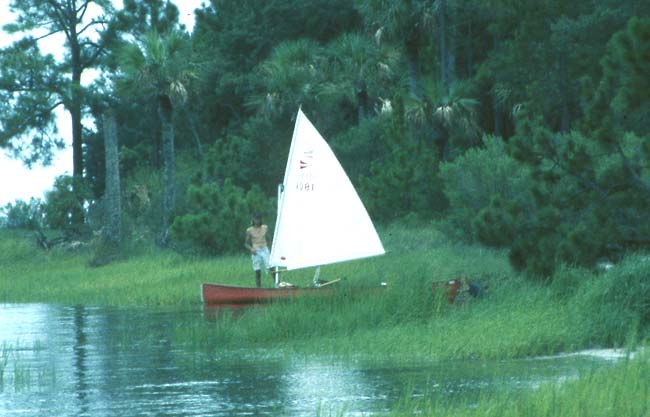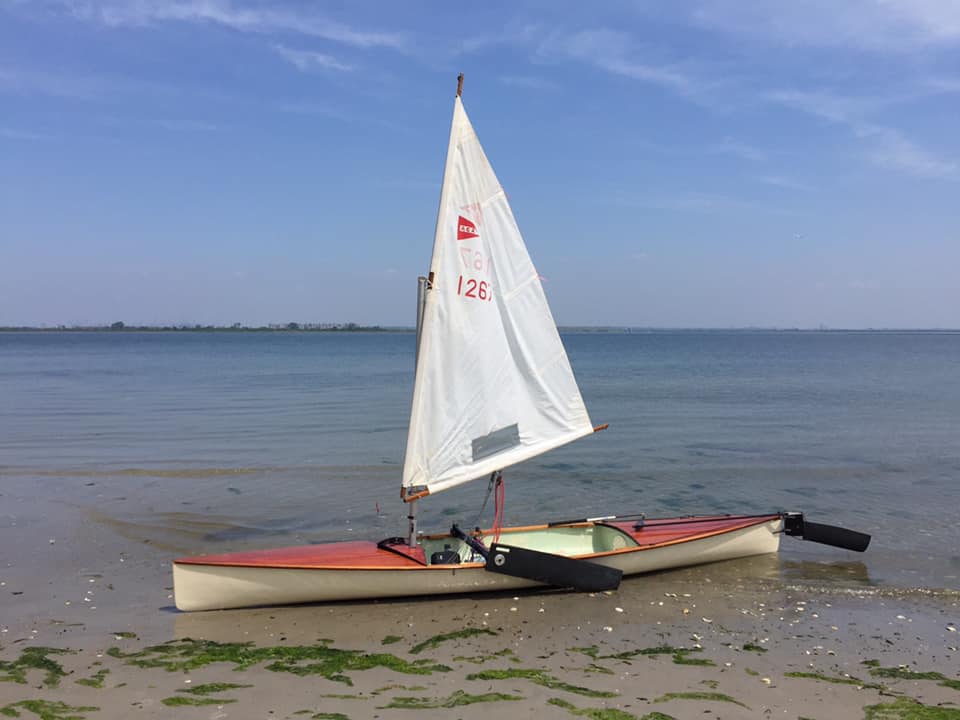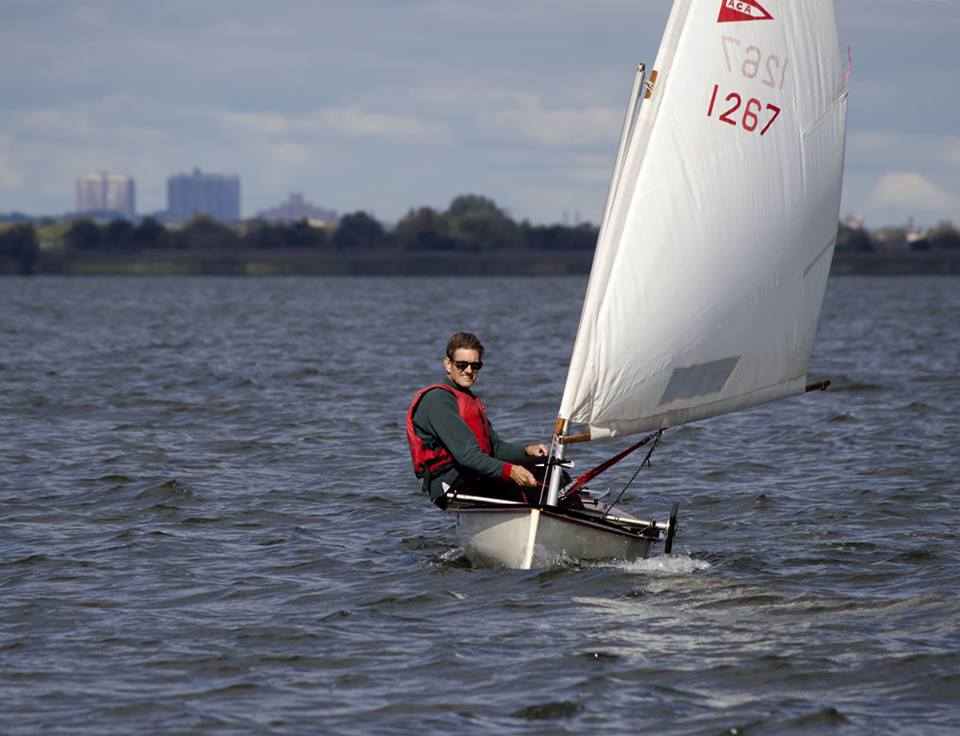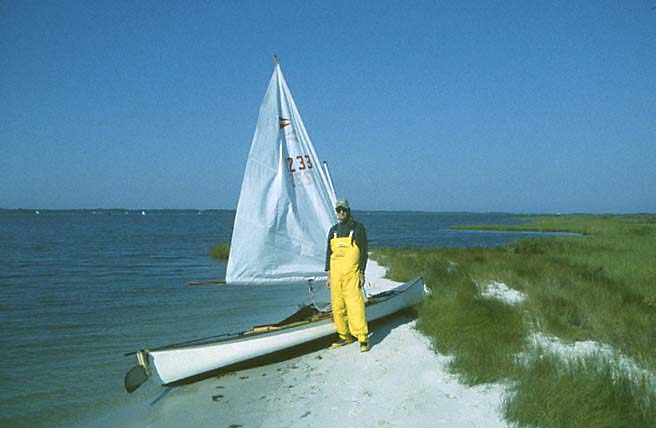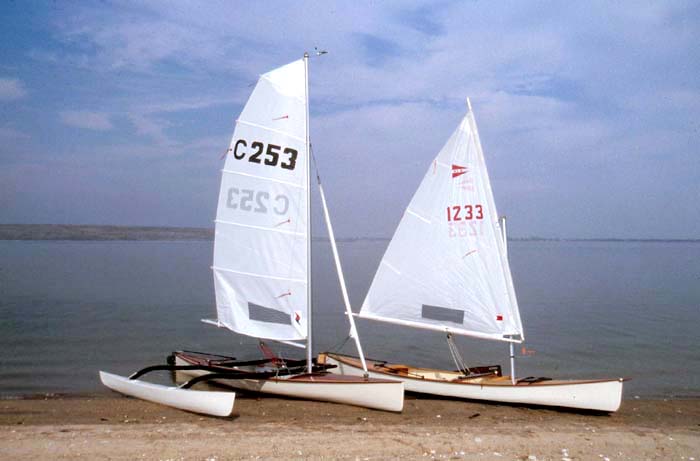Hi Rick and Bob,
At the risk of ruffling feathers, I'm going disagree with a couple of points. I think you should learn how to jibe safely, and practice (in light air at first). There may well be times when you lack sea room to wear around, and a jibe may be the only option. I agree that a sailing canoe jibe in a lot of wind can be hairy. A vang will help control the boom. Once you lose the fear of the jibe, and get good at it, you can do some pretty impressive things. I used to sail every year with a group down on Cedar Is., NC. The landing spot was a narrow creek which was invariably down wind in the afternoon. I liked to sail in there on a screaming run, jibe all standing, and round up spectacularly head to wind next to the bank, and step out of the canoe dry shod. That is best to practice first without an audience.
Also, my experience has been that a leeboard immersed on anything below a broad reach is unstable. I've found that there is a definite heeling force towards the immersed board, particularly if the board is on the same side as the boom. A canoe likes to run fast with just the rudder, and crew weight aft. Particularly a Grumman, with the mast stepped so far forward. But they are fast down wind. I sailed, and raced, a Grumman for a year, before buying a glass hull and rebuilding he rig. I don't have any Grumman pics, unfortunately, but below are some of my glass canoes with 45' ACA lateen, and some with the 55' C Class rig. I'll post some some outrigger shots, too. But those will be out of the realm of what Bob is doing.
Oh yes! Flotation, flotation, flotation. A flotation bag bow and stern will help!
First pic is my first sailing canoe, before rebuilding the hull and rig. South Edisto River, S.C. 1993. The others are various and sundry, through the last close to 30 years of canoe sailing. It's too many pictures, I know. Can't help it.
I have rigging pics, if anyone is interested. Good luck!
Jim


